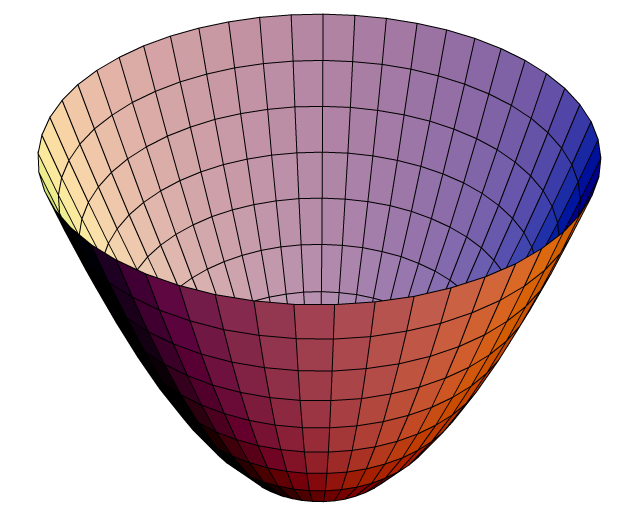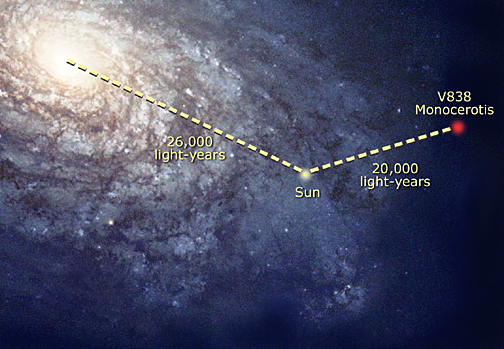DonMannino wrote:I am puzzled by the explanation for this photo. If the star became bright in 2002, and the picture was taken in 2004, shouldn't the size of the light echo ring be 4 light years (radius of 2 light years)? The picture explanation says the reflected light ring is 6 light years in diameter.
A quick answer is - yes - if you measure the apparent speed at which the signal is travelling perpendicular to the view direction, that apparent speed can be greater than the speed of light. This is a so-called superluminal illusion - of which there are many in astronomy - and this is a classic case.
A good write up of this object and the superluminal effect is here:
http://en.wikipedia.org/wiki/Light_echo
A separate write up on more general superluminal effects is here:
http://en.wikipedia.org/wiki/Superluminal_motion
An important point is that with a light echo - the only thing that has to move is light itself - which of course is moving at c and lights up things in its path as it races through stuff, illuminating a shell of said stuff to make it fleetingly visible from Earth. Therefore, light itself can appear, by this illusion, to be moving faster than c. But nothing crazy is going on - it's just an illusion caused by geometry and the finite speed of light.
More surprising is that actual matter, i.e. high speed jets, can be moving so fast they create this illusion also. That isn't just a case of light moving at the speed of light - but matter moving at high relativistic speeds comparable to the speed of light. Such jets have been observed for decades, as described in the second link above. That is pretty impressive - but still nothing is exceeding c.
A light echo could be seen as an expanding, superluminal shell from any direction - but for a jet to appear superluminal it would need to be pointed more directly at you - so as time goes by it gets a lot closer each time you measure its lateral change in position - causing the superluminal illusion by magnifying the apparent rate of lateral motion.
zloq
 Light Echoes from V838 Mon
Light Echoes from V838 Mon



